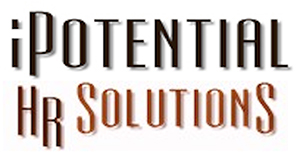by Enrique Baltierra, SPHR
Read original article here.
In the last 2 years, the employment market has had its fits and starts. However, it appears that the dust just might be beginning to settle and new optimism is beginning to sprout. Echoes of ‘let’s get past 2011’, much less the last 10 years before that, will fade as we position the workplace on the starting blocks of a new decade that can be full of opportunity, creativity and fulfillment. Now is the time to review the strategies in your workplace that exist towards engaging employees at every level for what is to come.
All that survived the economic downturn by keeping their jobs, and those slowly re-entering the workforce, wonder what type of environment will allow them to maximize their potential with some sense of relief, firmer footing and confidence in their contributions. Your challenge is creating that environment and ensuring your efforts are relevant and meaningful to every employee, regardless of their background. Inclusion and engagement practices will become the ‘New Diversity’ and provide an opportunity to get beyond measure and compliance, audit and awareness training, and instead focus on vibrant proactive strategies that ensure every employee BELIEVES they can contribute and have a voice in the future success of their work and their organization. If employees believe these practices are in place, then they will stay with you as the economy returns to viability.
To position your organization well for the dynamic employment market that we all hope will rebound dramatically, there are several practices I would recommend to be part of your culture and practice:
Creative Social Media—The last two years alone have seen a dramatic transformation in how people get information and how quickly they follow trends and respond to news. Companies must be more fluid and proactive in how they attract, source and engage candidates while selling their value proposition. Generational differences and what work culture means the most to GenX’rs versus, GenY’rs versus Boomers will be important to grasp, since these groups will no doubt use social media to find out for themselves. Therefore, what your website, Facebook, Linked In and Twitter sites say about your company can make a difference to an evolving and diverse candidate base.
Alignment—Employment candidates and existing employees will want to see individual goals aligned to business objectives that are clear and engaging. In this rich and dynamic global workplace, candidates will look to companies where they can grow, use technology, learn and make an impact, but the work must be meaningful and tied to a clear and cohesive vision.
Leadership—Managers must be part of your front line value proposition referenced above. Interview skills must be honed so that candidates hear from their prospective workplace not just a list of interview questions, but a message of inclusiveness and engaging work practices. Managers must also be trained to play a key role in ensuring goals for existing employees are clear, attainable and leverage employee talents because research has time and time again shown that they want to know that their backgrounds, capabilities and potential contributions are noticed.
Business Resource groups (BRG’s)—Affinity groups for the sake of affinity groups are in the past. For the future, well facilitated BRG’s must be leveraged as critical avenues for diverse employees (who may have strong affiliations with certain target markets), to engage, provide input on product, service ideas and future pipelines as well as contribute to innovate approaches to the business needs!
Growth Opportunity—Employees will need to see potential career paths and their ability to take advantage of growth opportunities (vertically or horizontally) with diversity clearly visible at all levels of the organization. How many times have you searched the leadership page of a company’s website and seen a lack of diversity. Clearly, seeking and promoting talent within that diversity should always be a primary driver, but is the effort and practice believable?
Rewards and Recognition—Cultural and structural practices ensure employees are acknowledged not ‘just in time’, but for what they holistically bring to the organization. Incentives and compensation are equitable, clearly communicated and perceived as fair.
Time and time again, major studies have proven that with these practices your work environment will increase in commitment, productivity and desire by all individuals to add value to their companies! Once the market turns, you want to ensure that these practices are continuously monitored because the investment you have made in your current employees and the investment you make in attracting the best is something you want to see a positive return on. With this in mind, 2012 should be the start of some great things!
